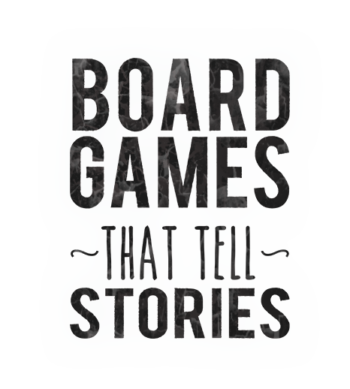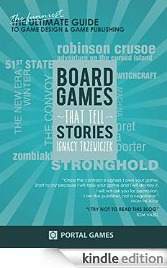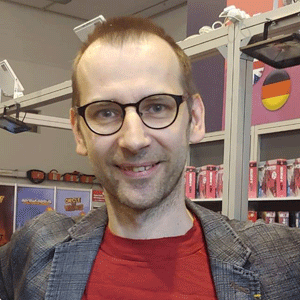Sara
This is a guest post by Charles Beauvais
You can learn about his game and back it at Kickstarter!
„What are you playing?”, she asked.
„It’s a new game idea I’m tinkering with.” I replied, somewhat distractedly.
„I want to play.”, she said.
„It’s not ready yet.”
The first thing you learn about game design is that your initial attempts are always bad. Not just unbalanced, or filled with unclear edge cases, or too fiddly, but really bad. The opposite of fun.
As such, I always do some solo playtesting before inflicting the game on anyone else. Sara, my wife, is often the first innocent victim of unfinished designs.
„I still want to play.”, she insisted.
„I don’t even know what the rules are yet. I’m just rolling the dice and moving pieces around.” I replied.
„But, you’re coloring!”
***
We had played a lot of Matt Leacock’s Roll Through the Ages, and I thought it would be an interesting design space to explore. In particular, the one side of each die where a player had to choose between 2 food and 2 workers. My goal was to combine RTtA with something like Delve, the solo dungeon-crawl dice game. In my mind, it was „Roll Through the Dungeon”, where the symbols on the dice would be swords, shields, wands, etc.
But, before I could allocate the symbols appropriately, I wanted to get a sense for the probabilities. I replaced the symbols with colors, and now I could roll 4 green, for example, or 2 purple. But what to do with them?
I sketched out a landscape scene: a river, tree, bird, sun, and arbitrarily assigned weights to them – this required 4 yellow, that required 2 green. And this nascent game is what my wife wanted to play.
***
A few weeks later, Sara’s mom (my primary Dominion opponent) was visiting. One morning, Sara woke me up.
„You’ve got to print out more puzzles. We’ve already colored in all the ones we could find.”
***
We’re out shopping, and I pick up a few boxes of crayons that are on sale, half-price.
„Buy more”, advises Sara, but I’m not sure.
„I’m still working on the game, and it might be a dud. I don’t want to be stuck with boxes of crayons.”
„You should buy them while they are on sale.”
„I’m sure crayons go on sale periodically. There’s plenty of time.”
Did I mention this was during September? When all the stores have their back-to-school sales? Periodically is right, I’d have to wait a year before crayons would be that cheap again.
***
„What is that?”
„It’s my coloring for this stained glass puzzle. I’m going to for an even distribution of the six colors.”
„It looks like a clown threw up. Print a blank copy for me, please.”
You be the judge. My version actually inflicts damage on the eyes.
***
Before finding a publisher, I created some copies of the prototype to demo and sell. While „how much would you pay for this game?” is a good question for playtesters, it’s even more powerful when it’s not hypothetical. I started with a print run of 250 dice, then another 250-die run, followed by two 1000-die print runs. That’s 2500 dice, all of which had to be stickered by hand. Each face of each die had two stickers, so, yes, we (with help from our friends) applied 30,000 stickers.
Three of the four corners can be stickered easily. Is it a purple die? Surround one corner with purple stickers, another corner with blue, and another corner with red. Simple. The last corner, however, required the remaining three colors in a specific configuration. For all 2500 dice, Sara was the only person I trusted (other than myself) to do this correctly.
***
I’m teaching the game to some new friends, and I start explaining the color bank mechanic.
„Wait,” interrupts Sara, „that’s not how it works.”
„Yes it is. I’ve changed it.”
„Well this new version is stupid. The last version was much more powerful.”
She’s right. The new version is weaker, but much simpler to explain. New players didn’t understand the old version, and thus didn’t use it correctly.
Game designers aren’t the only ones who find it hard to let go of clever mechanics. It affects early playtesters, too.
***
It’s 8:00 PM. We’ve just had dinner, and we sit down to sticker some more dice.
„I think it’s time.”, Sara says.
„Okay, let’s just finish this batch of dice.”
„Okay”.
We finish the last batch of dice, and then drive to the hospital. Twelve hours later, our daughter is born.
***
„The publisher wants to add a trading phase at the start of each round.” I inform Sara.
„That won’t work. It’ll slow the game down too much. It’ll be a disaster.” she replies.
I also have my doubts. I could see the need for more interaction, but I was worried about slowing down a quick-moving game.
„We won’t know until we give it a try.”
We try it with some friends, who are new to the game, so we introduce trading after they’ve got the basic flow of the game going. And what do you know? It works. It doesn’t slow down the game, it gets players to interact with each other, pleading, threatening, and having a great time. It’s a great addition.
***
There are many emotions involved in game design: elation, despair, pride, and disappointment. But I’d like to talk about gratitude. I wouldn’t have been able to produce this game without Sara’s help and support. She’s guided me through the disappointment of being rejected (again) by potential publishers, and she’s shared the joy of reading great player feedback. She’s supported me in this crazy dream of being a game designer, and I hope I can show the same support in her next ambitious project.



 I strongly believe that good board game is the one that tells a good story. You play it and suddenly you are sucked into it, you feel chills on the skin. Emotions grow. In a moment you defend castle. You hear roar of warriors. You smell boiling oil. You are into it.
That's how I design my games. I always want to tell a good story. I want players to be into it. As deep as possible.
I strongly believe that good board game is the one that tells a good story. You play it and suddenly you are sucked into it, you feel chills on the skin. Emotions grow. In a moment you defend castle. You hear roar of warriors. You smell boiling oil. You are into it.
That's how I design my games. I always want to tell a good story. I want players to be into it. As deep as possible.




what is the game of the game you and your wife are working on can we see some pictures of it please